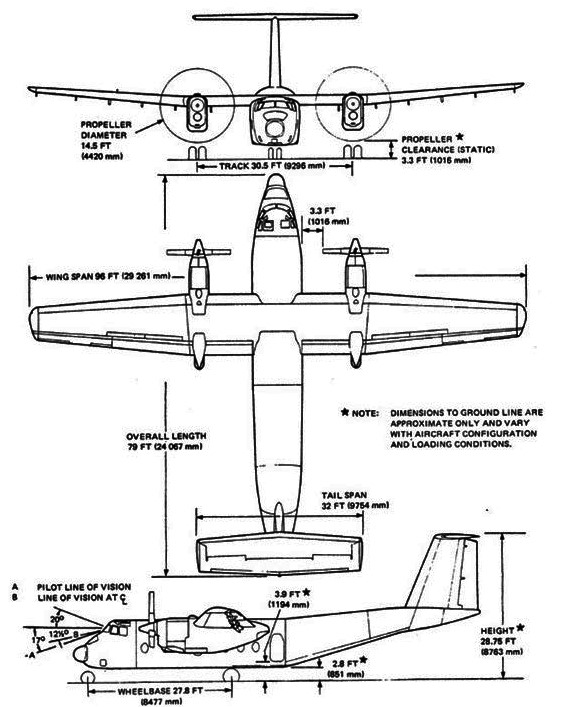


Marking the end of a Legacy aircraft, the final operational flight for the CC-115 Buffalo aircraft was flown by Royal Canadian Air Force "442 Transport and Rescue Squadron" , based out of 19 Wing Comox, British Columbia.
A product of "De Havilland Aircraft Company of Canada" the CC-115 Buffalo aircraft , a designation for "DHC-5A" aircraft was originally used for the tactical transport role before being re-assigned to domestic search and rescue role in the year 1975.
On 15th January, like it's countless service to Canada, the final operational flight involved airborne search and rescue standby training, conducting a flight within Search and Rescue Region Victoria, ready to divert to an emergency at a moment’s notice from Joint Rescue Coordination Centre Victoria.

Training included Search and Rescue Technician parachute jumps and parachuting of emergency equipment as the aircraft visited locations around Vancouver Island.
While work continues to prepare the CC-295 Kingfisher aircraft for its new role as Canada’s fixed-wing search and rescue aircraft, interim search and rescue coverage for the Search and Rescue Region Victoria will be provided by the CC-130H Hercules fleet.
Aircraft from 435 Transport and Rescue Squadron will augment 442 Transport and Rescue Squadron to ensure consistent fixed wing search and rescue coverage.

CC115 Buffalo is a short takeoff and landing (STOL) utility transport turboprop aircraft developed from the earlier piston-powered DHC-4 Caribou. The aircraft had extraordinary STOL performance and is able to take off in distances much shorter than even most light aircraft can manage.
The "Buffalo" concept was tabled from a 1962 United States Army requirement for a STOL transport capable of carrying the same payload as the CH-47A Chinook helicopter. In the reply, the De Havilland Canada based its design to meet the requirement on an enlarged version of its DHC-4 Caribou, already in large-scale service with the United States Army, to be powered by General Electric T64 turboprops rather than the Pratt & Whitney R-2000 piston engines of the Caribou.
“The CC-115 Buffalo aircraft, its aircrew and personnel have provided crucial assistance to Canadians for more than five decades. To those who worked with the “Buff”: your dedication, service and commitment to excellence demonstrate that Canadian Armed Forces members put duty before self to help Canadians in time of need. Thank you for your service.”
The Honourable Anita Anand, Minister of National Defence
“In the Royal Canadian Air Force, we have an incredible respect and strong sense of pride for the aircrew, maintenance and support personnel who have dutifully served alongside the CC-115 Buffalo aircraft over the past 55 years. These amazing teams, and the “Buff” itself, are known to have operated in many challenging operational environments.
Their stories and commitment to operational excellence will be etched into storybooks, and in bidding farewell to the “Buff,” we will always remember those brave members lost in 1974, who perished while the aircraft was operating overseas on a peacekeeping mission with the United Nations.”
Lieutenant-General Al Meinzinger, Commander Royal Canadian Air Force
“The CC-115 Buffalo entered service in the Royal Canadian Air Force in 1967 and has been used for search and rescue operations since 1975. Canadians, especially on the West Coast, will recognize the aircraft for its distinctive search and rescue paint scheme that was likely a welcome sight for many requiring life-saving rescue throughout its distinguished service.
A special thank you to all those who served on this aircraft; for your remarkable expertise and professionalism. Buffalo crews and maintainers have a lot in common with their aircraft, as they are both known for being hardy and resilient!”
Lieutenant-Colonel Rhonda Stevens, Commander 19 Wing Comox and CC-115 Air Combat Systems Officer, Royal Canadian Air Force

Procured between June 1967 and December 1968, the CC-115 Buffalo aircraft provided medium tactical transportation and search and rescue services. The CC-115 entered service in 1967 and has been flown by the Royal Canadian Air Force (RCAF) for 55 years.
The CC-115 aircraft initially served in the RCAF as multi-purpose transportation aircraft and was flown on multiple United Nations missions overseas. In the 1970’s it was converted to a dual role transport / search and rescue aircraft, before being exclusively flown in Canada as a fixed wing search and rescue aircraft. The CC-115 has been flown by 429, 413, 424, 440 and 442 Squadrons in the RCAF.
On August 9, 1974, a CC115 Buffalo (CC1155461) was shot down by Syrian anti-aircraft missiles while on United Nations duty supporting Peacekeepers in the Golan Heights. All nine CAF members on board were killed, making it the largest single loss of lives in Canadian peacekeeping history.
While flying as a search and rescue aircraft, the CC-115 Buffalo has played a critical role in supporting life-saving missions throughout Canada and later in its service history, exclusively serving in the West Coast region. Well-suited for flying over rough and mountainous terrain, the Buffalo is recognized for its all-weather capabilities.
The Department of National Defence will retain three CC-115 Buffalo aircraft as historical artefacts to fulfill the departmental obligations towards history and heritage. The remaining aircraft have been or will be transferred to museums or used as training aids.
The Government of Canada is acquiring a fleet of 16 CC-295 Kingfisher aircraft to replace both the CC-115 Buffalo and CC-130H Hercules aircraft in the fixed-wing search and rescue role. Rotary-wing search and rescue in Search and Rescue Region Victoria is provided by the CH-149 Cormorant helicopter.
Info source : National Defence / Govt. of Canada.
